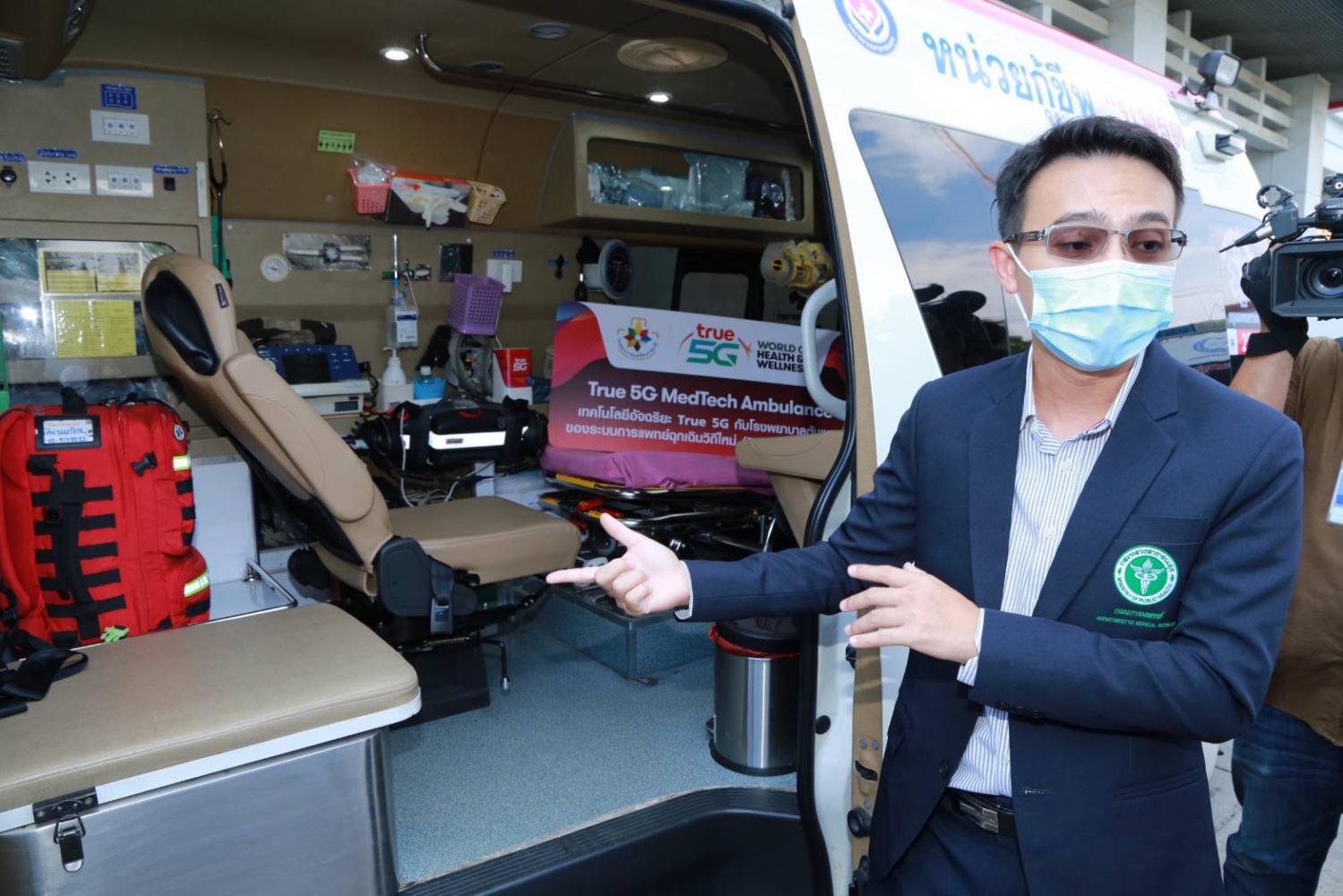
True Corporation is supporting 5G tech in ambulances that will help enhance diagnosis and treatment procedures and communication between paramedics and physicians for better preparation before patients are taken to hospital.
The smart ambulance would serve as a mobile emergency room to save patients' lives. This forms part of the so-called New ER model, a new standard for emergency medical units.
The project is being launched under a collaboration by True and Nopparat Rajathanee Hospital in Bangkok's Kannayao district.
"The use of 5G networks and advanced innovation technology makes it more smooth for medical communication, which empowers the New ER model -- the first of its kind in Thailand," said Somboon Tosborvorn, director of Nopparat Rajathanee Hospital.
State-run Nopparat Rajathanee Hospital is handling 3,000 patients a day. Its patient-handling capacity is close to that of main provincial hospitals.
Piroon Paireepairit, head of the 5G working group at True, said 5G tech has the potential to create new use cases for the healthcare sector.
True has invested more than 50 million baht in creating new use cases in the sector.
"By having a smart intelligence network, it will bring in more efficiency and safety to patients," Mr Piroon said. "With 5G, we are capable of sending high-resolution large data like CT scans and ultrasound images via the network."
True selected Nopparat Rajathanee as the model because it is similar to main provincial hospitals in terms of capacity and practices can be observed by other medical facilities.
The hospital is also the workplace of Lalana Kongtoranin, a former Miss Thailand and a heroic figure for health and wellness under True's 5G campaign.
Dr Lalana said the telecommunication tech can help ward off infection risk among medical practitioners as they can diagnose patients who have fever in remote areas.
Chalermpon Chairat, chief of the emergency unit at the hospital, said that via 5G tech the hospital's ambulances have been transformed into smart vehicles in which CCTV cameras can live-stream all activities inside.
The emergency staff inside the vehicles can wear augmented reality (AR) glasses that transmit images in real time back to hospitals where doctors can observe patients' symptoms, such as stroke or accident wounds.
"We plan to use mobile CT scans and mobile X-rays including mobile ultrasound in the ambulance," Dr Chalermpon said, adding that this will speed up the scanning process by 30 minutes.
The ambulance is fitted with a ventilation system that pushes air out of the vehicle, warding off infection risk -- a particular concern during the coronavirus pandemic.
In Thailand, the mortality rate of crisis patients in emergency care is about 7-8%, versus 12% globally, Dr Chalermpon said. Deployment of smart ambulances is expected to reduce the death rate.